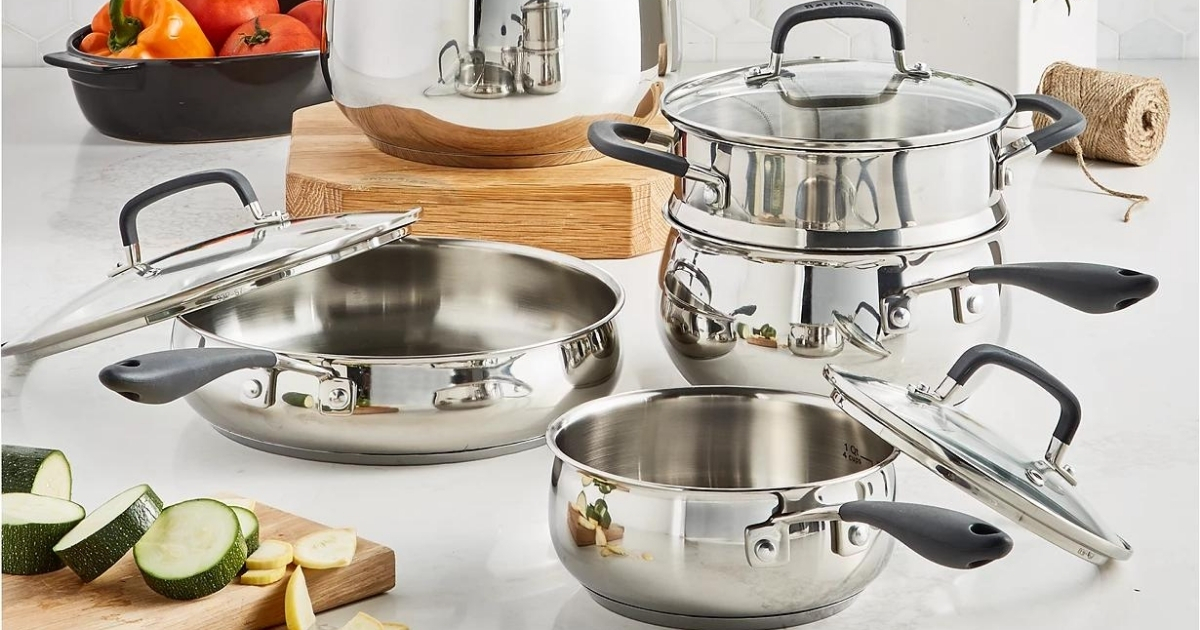Stainless steel cookware belgique sets and individual pots and pans purchased at the Bargain-Marts may or may not actually be bargains. Sure you will know the price you paid for the product, and how that price compares to the other Marts in town, but did you get a deal? The only way to know the value of your stainless steel cookware set purchase is to know the basics of cookware language. After you get the very basics of cookware terms, you can then make better purchasing choices. In this article we will discuss material thickness and how this improves quality. The information we will cover in this article includes stainless steel cookware, aluminum cookware and cast aluminum cookware whether purchased in sets or individual pots.
Sometimes the Marts due in fact have very good deals on quality cookware products. This may not always follow the brand name rules that at first come to mind. Most brand name products have different product lines, and these lines usually are of different level of quality. The good news is if you buy brand name products, even the low cost lines, you will be getting a product that is normally much better quality that the better or the best of the non-brand name cookware. The brand name producers do not want you to associate their name with low-quality products. If this association happens you will not be a repeat buyer of that brand. If you go into a store or even a web site and the manufacturer’s name is not readily seen or advertised, the buyer should be cautious. Manufacturers of quality products want the consumer to know their name.
Now let get started on some cookware terms and the very basic knowledge you will need to know. As I mentioned above, we will begin with thickness of a pot or pan and the terms used. Metal thickness can be stated in inches (thousandths), millimeters, or gauge. Since many manufactures are now in Europe, they sell to Europe as well to the USA; those brands will be rated in MM or millimeters. Do not let metric measurements scare you; 1.0 MM is 0.0394 inches thick, a 0.5 MM is one half that thick or 0.0197 inches thick and 2.0 MM is twice that thickness or 0.0787 inches thick. The higher the MM rating the thicker the utensil will be. The next term for thickness is called gauge. Gauge can be hard to understand. The measurement in gauge works the reverse of normal thinking. The larger the number of gauge the resulting material will be thinner. A 16 gauge material is 1.3 MM thick, an 8 gauge material is 3.25 MM thick and a 4 gauge material is 5.18 MM thick.
We have now talked about all three measurement systems, inches thick in thousandths, millimeters and in gauge we will see where these units are used. If you are buying aluminum cookware or cast aluminum cookware the thickness will be in gauge. Most stamped aluminum cookware in the mass market is 10 gauge on fry pans and a thinner 12 gauge on saucepans. Better quality aluminum cookware would use a heavier 8 gauge on fry pans and 10 gauge on other pieces. Cast aluminum cookware is equivalent to 6 gauge. Consumers are moving up to more durable fry pans in recent years – either 6 gauge or a very heavy 4 gauge. Bargain basement lightweight fry pans with “generic” non-stick coatings are usually 12 gauge or 14 gauge. This is too thin to provide any length of time in service. The first time the heat is high under these fry pans the bottoms could warp, the contents burn or both.
If you are buying stainless steel cookware the measurement of thickness will be in millimeters, (if the manufacturer is in the USA it may be listed in thousandths of an inch). The standard for top of range stainless steel cookware is 0.6 MM. Premium department store brands will have stainless steel cookware in the range of 0.7 MM to 1.0 MM thick. Low end stainless steel cookware is generally 0.5 MM thick. If you have the choice between two pots one is 2.59 MM thick (0.102 inches or 10 gauge) and the second is 5.18 MM thick (0.204 inches or 4 gauge) the best pot for even heat distribution is the 5.18 MM pot.
If you look at the bottom of your stainless steel cookware or your aluminum cookware and you see discolored, almost black shaded areas on the surface. If the pot does not set flat due to being warped, the likely cause is the utensil has had too much heat applied for its’ thickness. Once the utensil is warped it will never be able to transfer heat uniformly.
